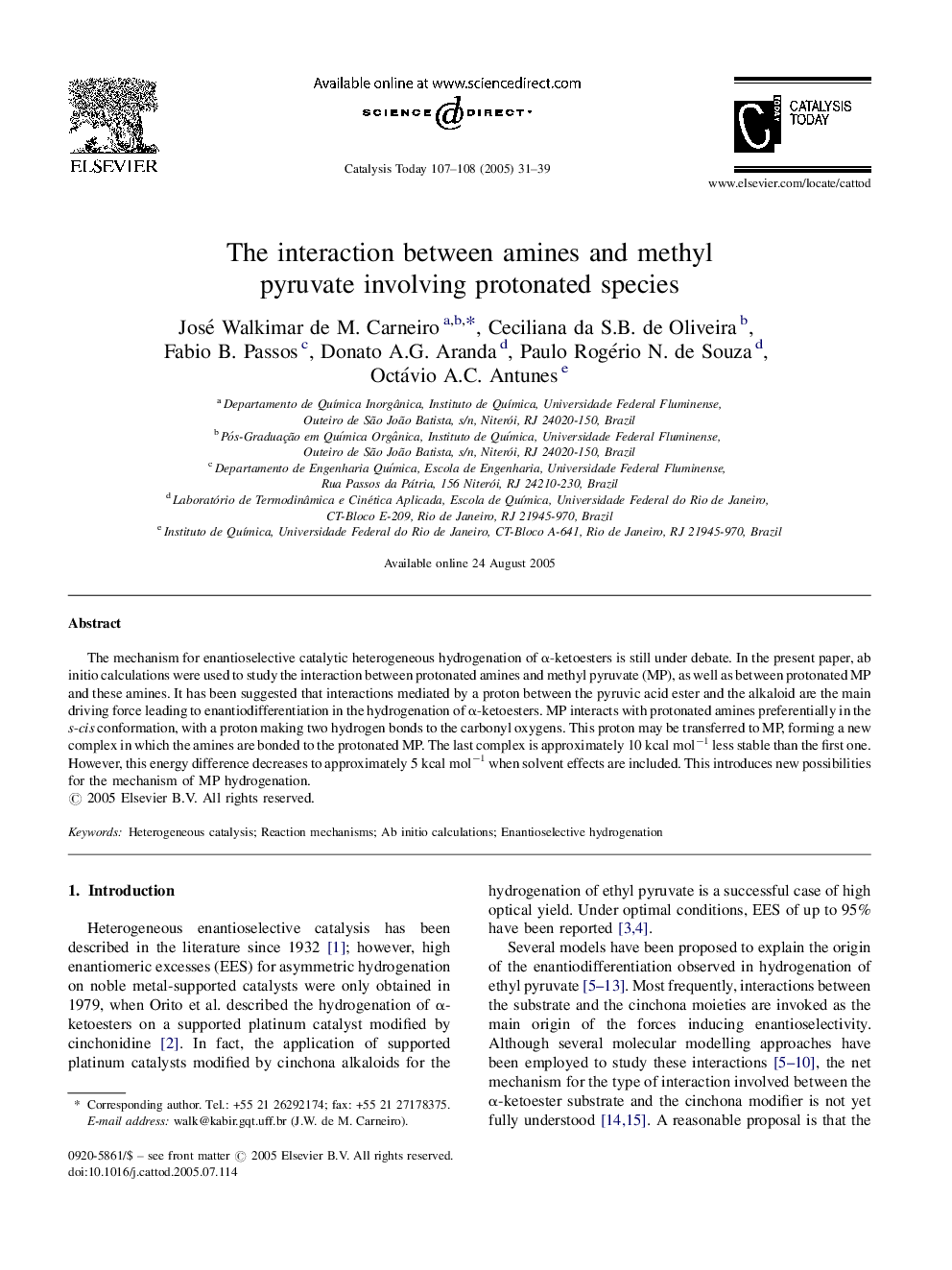| Article ID | Journal | Published Year | Pages | File Type |
|---|---|---|---|---|
| 9610163 | Catalysis Today | 2005 | 9 Pages |
Abstract
The mechanism for enantioselective catalytic heterogeneous hydrogenation of α-ketoesters is still under debate. In the present paper, ab initio calculations were used to study the interaction between protonated amines and methyl pyruvate (MP), as well as between protonated MP and these amines. It has been suggested that interactions mediated by a proton between the pyruvic acid ester and the alkaloid are the main driving force leading to enantiodifferentiation in the hydrogenation of α-ketoesters. MP interacts with protonated amines preferentially in the s-cis conformation, with a proton making two hydrogen bonds to the carbonyl oxygens. This proton may be transferred to MP, forming a new complex in which the amines are bonded to the protonated MP. The last complex is approximately 10 kcal molâ1 less stable than the first one. However, this energy difference decreases to approximately 5 kcal molâ1 when solvent effects are included. This introduces new possibilities for the mechanism of MP hydrogenation.
Keywords
Related Topics
Physical Sciences and Engineering
Chemical Engineering
Catalysis
Authors
José Walkimar de M. Carneiro, Ceciliana da S.B. de Oliveira, Fabio B. Passos, Donato A.G. Aranda, Paulo Rogério N. de Souza, Octávio A.C. Antunes,
